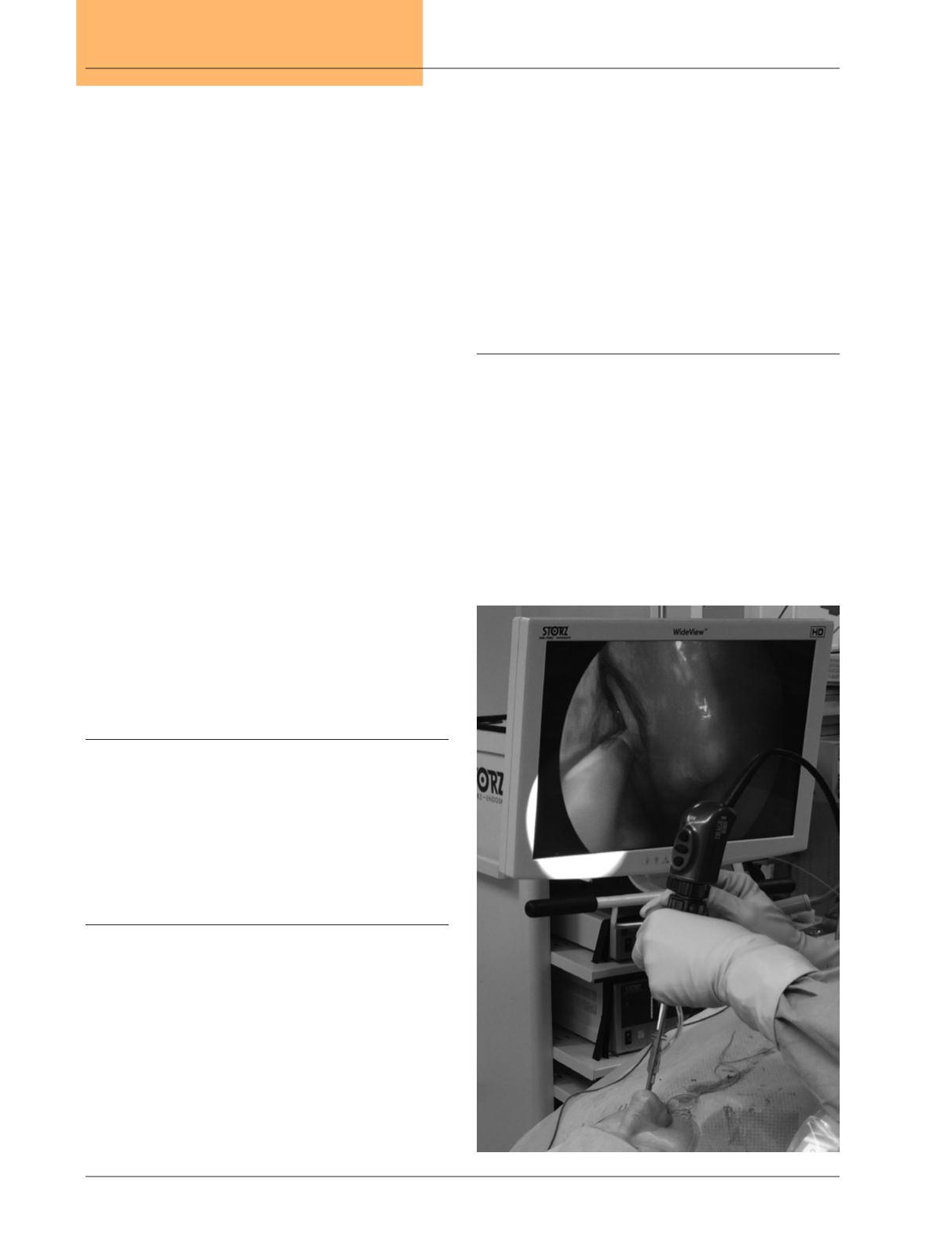
42
Vol. 66, No. 1 2015
Northeast Florida Medicine
Otolaryngology
Advances in Rhinology
By Robert Todd Snowden, MD, FACS and Albert Harrison Wilkinson, III, MD, FACS
The diverse field of Otolaryngology (ENT) creates a wide
variety of opportunities for innovation and change. Within
the ENTfield, one area that exemplifies this particularly well
is Rhinology. Rhinology involves the medical and surgical
treatment of nasal and sinus disorders.
Balloon-Assisted Sinus Surgery
One of the more innovative developments in sinonasal
surgery in recent years has been the advent of balloon-assisted
sinus surgery. Contrary to opinions whichpersist among some
members of the public, modern endoscopic sinus surgery
has shifted far away from the “sinus stripping” procedures
of the pre-endoscopic era. Instead, modern sinus surgery
has taken the approach of attempting to respect natural
sinus physiology by facilitating natural sinus drainage and
ventilation patterns. Balloon-assisted surgery takes this a
step further by permanently dilating natural sinus ostia
while preserving as much natural mucosa as possible.
1
Types
There are several types of balloon-assisted sinus surgical
equipment on the market. The original and most common-
ly-used technology involves a Seldinger-type placement of
a dilating balloon into a sinus aperture over a guide wire.
These guide wires are typically directed by fluoroscopy
or by a lighted fiber that transilluminates the sinus when
Address correspondence to:
Robert Todd Snowden, MD, FACS
Otolaryngology
Baptist ENT Specialists, South Division
(904) 268-5366
Albert Harrison Wilkinson, III, MD, FACS
Otolaryngology – Facial Plastic Surgery
Baptist ENT Specialists, South Division
(904) 268-5366
Abstract:
The field of rhinology, involving the medical and
surgical treatment of nasal and sinus disorders, has seen considerable
innovation over the past decade. Recent surgical advances include
balloon-assisted sinus surgery, a less-invasive alternative to
conventional surgery. While undeniably helpful, balloon-assisted
surgery still has a limited scope of applicability. Stereotactic image
guidance offers improved delineation of surgical anatomy and
may reduce surgical risk; such image guidance has also expanded
the area of transnasal skull base surgery and intracranial surgery.
Biocompatible, resorbable intranasal dressings have improved
patient comfort after surgery. Medically, alternatives to oral or IV
antibiotics have been developed in the form of compounded topical
antibiotics applied intranasally. Antibiotics continue to be prescribed
in accordance with clinical guidelines and, when appropriate,
endoscopically-guided sinonasal culture results. For epistaxis,
particularly given the variety of new anticoagulants on the market,
new topical hemostatic medications are fortunately available. For
refractory epistaxis, newer options for treatment include endoscopic
sphenopalatine artery ligation and transarterial embolization.
Figure 1.
Modern video-assisted endoscopic sinus surgery.
Video screen shows placement of balloon catheter
guide between septum and turbinates.


